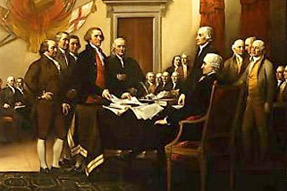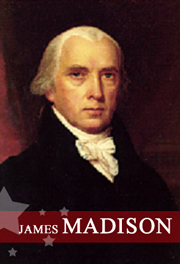|
The Constitutional Convention
Before giving up on the Articles of Confederation, there were several attempts to amend and improve them. In 1786, Charles Pinckney of South Carolina called for the Confederal Congress to revise the Articles so that the national government could better lead the nation. In response, the Congress appointed a committee that drafted several amendments to the Articles. Most significantly, the proposed amendments would have given the Congress the exclusive authority to regulate interstate commerce. They would have further empowered the Congress to punish members for poor attendance at legislative sessions. The amendments, however, were rejected and the governmental structure established by the Articles remained unaltered. As problems between debtors and creditors and interstate trade became more serious, however, calls for revising the Articles grew louder. In February of 1787, the Confederal Congress called for a convention to be held in May of that same year at Philadelphia. While the Confederal Congress explicitly endorsed the convention for the “sole purpose of proposing amendments” to the Articles of Confederation, it unwittingly set the stage for its own dissolution and the creation of an entirely new government for the young nation. Twelve of the thirteen colonies (Rhode Island refused to participate) appointed delegates to the Convention. The Convention, however, got off to a slow start. A sufficient number to form a quorum was finally assembled on May 25, 1787, several days after the Convention was scheduled to begin. On that day, twenty-nine delegates from nine states were present at Independence Hall in Philadelphia. At various points throughout the Convention, fifty-five of the more than seventy appointed delegates attended the Convention. Those present, however, did not let their absence dissuade them. They undertook the work at hand, quickly deciding to meet in private to promote the free flow of debate and the exchange of ideas.
Those in attendance at the Convention included such notable figures as George Washington, James Madison, Benjamin Franklin, and Alexander Hamilton. The delegates included Revolutionary War veterans, farmers, merchants, lawyers and bankers. While some have argued that the delegates were primarily motivated by their own economic interests to attend the Convention and draft the document they did, a more careful analysis suggests that they were men with profound civic interests as well. Indeed, the economic interests they sought to promote would prove not only to benefit themselves but the nation as a whole. It was a group, however, that was clearly interested in bringing more order and stability to the nation. As such, the work of the delegates might be seen as promoting the interests of the creditors of the day more than those of the debtors. While the reputations of Washington and Franklin gave credibility to the Convention, it was James Madison who was the Convention’s dominant figure. As the primary author of the Virginia Plan, which was the framework on which the Constitution was based, Madison set the tone for the Convention in its early days and was a key contributor to the debates at each important juncture. Throughout the Convention, Madison’s was the “clearest and the strongest voice” arguing that a stronger central government was essential to the nation’s ability to govern itself. Because of his role at the Convention and in the ratification debates that followed, Madison is often referred to as the “Father of the Constitution.”
This work is licensed under a Creative Commons Attribution-Noncommercial-Share Alike 3.0 Unported License |
About Us | Terms of Use | Contact Us | Partner with Us | Press Release | Sitemap | Disclaimer | Privacy Policy
©1999-2011 OpenLearningWorld . com - All Rights Reserved





